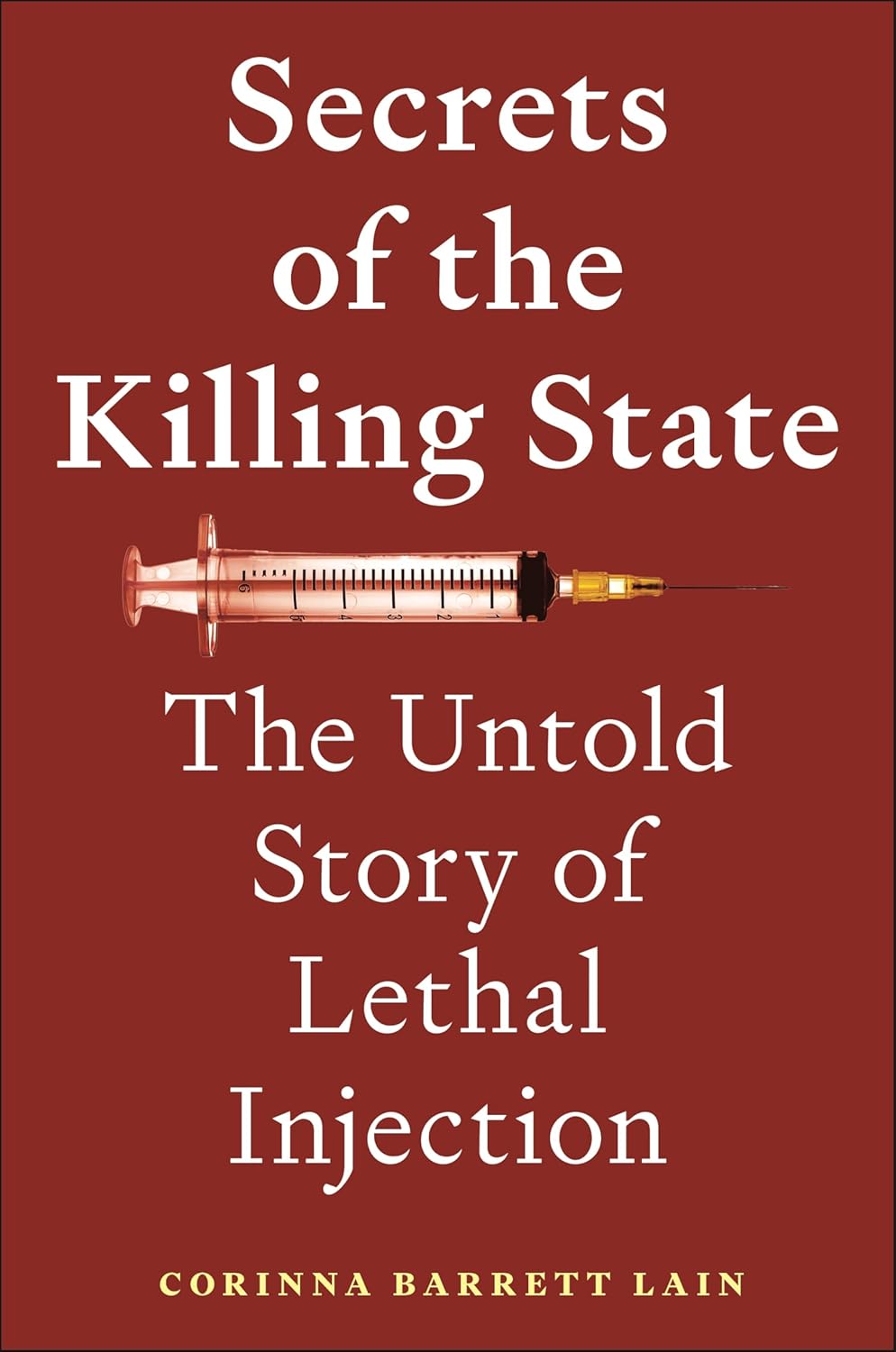Texas was the first U.S. state to execute someone by lethal injection, but the idea for the novel method came from Oklahoma. Our northern neighbor was the first to adopt the plan to replace the spectacle of the electric chair with something more palatable for witnesses and the public. Texas was just the first to test it out on a person.
Since 1982, when state officials injected Charlie Brooks—convicted of murder in Fort Worth—with a lethal cocktail of drugs dreamt up by Oklahoma’s medical examiner but untested in any research setting, Texas has led the country in lethal injections. Secrets of the Killing State: The Untold Story of Lethal Injection (NYU Press, April 2025)—a new book by law professor, former prosecutor, and death penalty expert Corinna Barrett Lain—brings readers into the death chamber to bear disturbing witness to the reality of lethal injection.
The new book pulls back the curtain on the clinical facade and reveals all the places the lethal injection process goes wrong, from the laws to the drugs to the pushing of the plunger on the syringe. It shows how tough-to-implement protocols have backed state corrections departments into a corner, creating a poorly choreographed horror show masquerading as a medical procedure.
As Lain puts it, lethal injection as we know it is based on “the illusion of science, the assumption of science.”

The three-drug protocol first used by states (and still used by many) was intended to make sure the person on the gurney died. Extremely high doses of three drugs—each lethal in its own right—would ensure that if one drug failed, one of the other two would surely work. While the specific drugs have varied over time, largely based on availability, the basic game plan persisted.
But this three-drug plan wasn’t reviewed by anyone before Oklahoma adopted it, followed the next day by Texas. Lain argues that every death penalty state that adopted the three-drug plan did so because no one was conducting any research into alternatives. Everyone was simply following the leader.
“States had come to a consensus in adopting the three-drug protocol, but it was based on the assumption that other states knew what they were doing,” she writes. “They did not.”
Decades after these protocols were put in place, studies showed these drugs were interacting with each other in surprising ways. One drug, meant to stop the heart, was actually weakened by another in the trio, so people weren’t having heart attacks—they were suffocating slowly, Lain writes. Autopsy reports showed that one common drug used as an anesthetic wasn’t saving people from pain, but rather causing it.
This is not to mention what happens when state agencies use the wrong amounts of these drugs, or in some cases, the wrong drugs altogether. Supply chain issues and pharmaceutical companies’ resistance to having their products used off-label in lethal injections have led states to buck regulations in order to get execution drugs. Some states, including Texas, have been caught trying to illegally import the drugs from sketchy sellers.
Texas finally abandoned the three-drug approach in 2012, but not because of the concerns about efficacy or potentially torturous executions. It had just run into supply chain issues with one of the drugs it had previously been using. Now, the state uses a one-drug protocol, injecting prisoners with pentobarbital the same way a veterinarian puts an animal to sleep.
But by 2020, more evidence had come to light that even this seemingly humane option was causing people to die painfully. The pentobarbital was destroying the lungs, causing people to “drown in their own fluids.” Lain also cites a 2020 report that showed Texas has botched many more executions using this one-drug protocol than it did under the three-drug plan.
In 2022, Texas prisoners sued because the state was using expired vials of pentobarbital in its executions. A court found that prison officials were violating more than one state law by doing this, but the Texas Court of Criminal Appeals wouldn’t allow that judge to stay any executions because of it.
In explaining the legal and clinical aspects of lethal injections, Lain’s writing is far from sterile. She lays out her fact-based narratives in stomach-churning detail, while also plainly sharing her analysis of the facts with readers, often bordering on righteous indignation. At one point, she refers to lethal injection as a “hot mess.” Of a lawyer who suggested an unknown drug be used in executions based on a Google search, she opines: “The incompetence is outstanding.”
The author talks about incompetence a lot in the book, but she notes that the people who are playing key roles in the executions—the prison guards pushing the syringes, the warden watching to see if anything goes wrong—aren’t meant to have the medical expertise necessary to prevent problems. But most doctors, with their solemn vow to “do no harm,” steer clear of the process.
The incompetence problem, then, is inherent to the idea itself. Lain argues that lethal injection, at its core, is “less about a humane death, and more about a humane-looking death.”
It can look humane because most of us don’t know much about the process, and that’s by design. Most of the public information we have about lethal injections comes from court proceedings. Texas doesn’t even conduct post-execution autopsies anymore.
While the subject of the book is narrow, and often difficult to sit with, the author effectively provides entry points for people who might not normally wade into the death penalty debate. She dives into contract law, supply chains, off-the-books drug deals by state agents, and executions as currency in local politics, among other interesting roads that intersect with lethal injection.
Lain has been researching the death penalty for almost two decades, and she spent five years writing Secrets of the Killing State. In the book, she describes in great detail executions that were botched, cases in which states have been called out by the federal government for violating laws in the name of executions, and accounts from witnesses and participants that struck a nerve.
“But the point is not the examples; it’s the patterns,” she writes. Here, she’s talking about state secrecy and obfuscation, but it really could be the thesis of the book. She provides a nearly overwhelming amount of evidence—the footnotes take up more than 70 pages—to back up her claim that lethal injection doesn’t provide the humane death it promises.
“Executions are the government at its most powerful moment, and if we don’t know what is happening in that moment, then we cannot hold the government accountable for what it does and doesn’t do in our name.”







